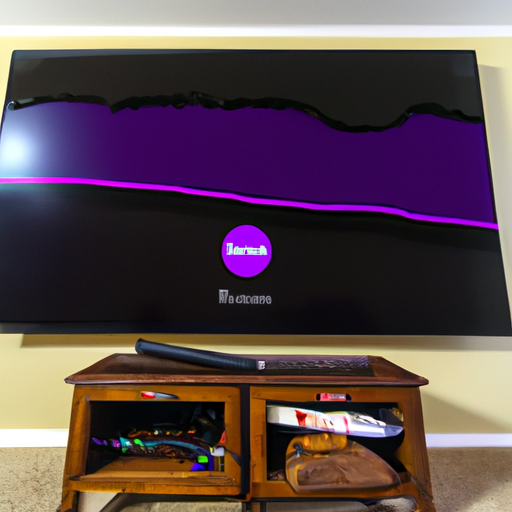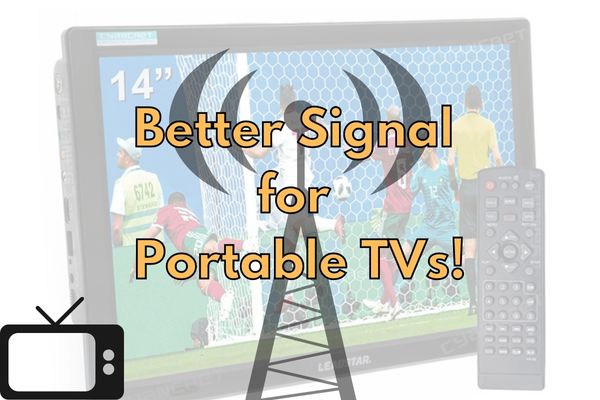Are you stuck on the loading screen of your Roku TV and don’t know why? It can be really frustrating when something isn’t working as it should, but don’t worry – there’s a few possible explanations that could explain why this is happening.
In this article, we’ll go through some of the most common causes for being stuck on the loading screen and how to fix them so you can get back to watching your favorite shows in no time!
The first thing to look at when trying to figure out why your Roku TV won’t load is whether or not there are any software updates available. Outdated software may cause glitches which prevent your device from properly starting up.
So make sure you check if any updates need installing before looking into other potential issues.
Finally, another reason why you might find yourself stuck on the loading screen could be because one of the cables connected to your television has become loose or disconnected. This is an easy problem to diagnose, simply by checking all connections between your devices and making sure they’re securely plugged in.
If everything looks ok then it may be worth restarting both the TV and Roku box just incase anything got switched off during transit or installation.
In this article we’ll discuss these three possibilities in further detail so that hopefully you’ll have solved whatever issue was preventing you from enjoying your streaming services soon enough!
Troubleshooting Process

Navigating technical issues can often be difficult. Fortunately, diagnosing and fixing a Roku TV that appears to be stuck on the loading screen is not overly complex.
By following some basic troubleshooting steps, it is possible to quickly correct the issue and return your device to normal operations.
The first step in this process should be inspecting any cords or connections between components. Ensure that all cables are securely inserted into their respective ports and check for physical damage such as frayed wires or exposed insulation.
If you find any sort of abnormality with the connection points, replace or repair them if necessary before continuing further testing.
Next, try restarting the device by unplugging it from power source then plugging it back in after a few moments have passed. This will clear out any temporary glitches that may have arisen during operation and reset the system without having to delve too far into advanced settings within the UI.
With any luck your television should start up normally again at this point; however, if it remains stuck on the loading screen you might want to investigate potential network connectivity issues next.
Network Connectivity Issues
If restarting the device didn’t resolve the issue, network connectivity might be to blame. First, check your internet connection and make sure it is stable and functioning properly.
Try running a speed test or pinging websites if necessary to confirm that you have an active connection.
If all checks out with your router and modem, then focus on any wireless networks associated with the television instead. Start by verifying the Roku TV is connected directly to your home Wi-Fi network.
If so, try resetting the network settings from within the user interface and setting them up again manually as needed. Doing this should restore a healthy connection for streaming content without further issues arising in most cases.
If these steps do not fix the loading screen dilemma either, consider downloading any available firmware updates for your particular model of Roku TV as a possible solution going forward. This may involve checking manufacturer websites or using other third-party sources depending on how old (or new) your device is; however, updating system software often helps eliminate many common technical problems — including stuck screens — quickly and easily.
Firmware Updates
As a last resort, performing firmware updates on your Roku TV may help clear up any issues with the loading screen. Upgrading to the latest version of system software can often resolve many technical problems and improve overall performance as well.
It’s important to check for available updates regularly if you want to avoid running into similar difficulties in the future.
To get started, simply open the Settings menu from within the user interface (UI) and navigate to System > About. This should provide all relevant information about your current device model and its corresponding firmware version number.
If an update is available, follow the steps provided by your manufacturer or other third-party sources depending on which type of television you own.
When downloading new system software — whether it be through official channels or otherwise — make sure that you are relying on verified resources only; some websites offer potentially malicious downloads that could cause additional damage to your device instead of fixing existing problems like stuck screens.
TIP: Before beginning any kind of firmware upgrade process, ensure that you have backed up any personal data stored on your device beforehand as a precautionary measure against potential data loss during installation. Doing this will save yourself a lot of trouble down the road!
Overheating Problems
Ironically, getting stuck on a loading screen is not the only issue that can arise from an overheating device. While it may seem counterintuitive at first, something as seemingly harmless as too much heat can cause serious problems with your Roku TV — and in some cases, even lead to complete hardware malfunction!
To avoid such scenarios, here are few tips you should keep in mind when using your television:
- Keep the area around the device clear of clutter or dust buildup; this helps ensure that air circulation isn’t obstructed by anything. – Make sure there is enough space between objects so that hot air has room to escape without being trapped.
- Check for any loose cables connected to the back of the unit; these can act as additional sources of heat if left unchecked. – Finally, never cover up vents or grates located within close proximity of your Roku TV; doing so blocks airflow which could potentially lead to dangerous temperatures inside the system itself.
By following these simple guidelines, you can help make sure that your device stays safe and running smoothly for years to come!
Hardware Malfunction
Unfortunately, hardware malfunction is a common issue with any device — and Roku TVs are no exception. In some cases, the problem can be traced back to an internal component that has become faulty or worn down over time.
This can cause disruptions in performance such as freezing on screens or unexpected shut offs when using certain apps.
If this happens to you, it’s important not to panic – instead, take stock of what’s going on and identify the source of the problem before attempting any repairs yourself. If it turns out that the damage isn’t too severe, then replacing individual parts might do the trick; however, if it seems like there is more extensive damage involved then seeking professional help may be your best option.
In either case, having a good understanding of how everything works inside your television will go a long way towards ensuring successful repairs and helping prevent future issues from occurring. With that said, let’s move on to look at external connections and their potential impact on your Roku TV experience.
External Connections
It almost seems like a cruel joke that external connections can throw off your entire Roku TV experience – but alas, it’s true! At the very least, you’d think that having all this technology at our fingertips would make life easier. Instead, it often feels like we’re playing a game of Jenga trying to figure out which cord is causing our streaming issues and if there’s any way to fix them without tearing our hair out in frustration.
The truth is, this type of issue can be incredibly overwhelming for even tech-savvy users. From making sure everything is plugged in correctly to ensuring all cables are functioning properly — these seemingly small details can have an enormous impact on how your device operates.
To top it off, different devices may require unique setups or adjustments depending on their individual needs. So while getting everything connected might seem straightforward enough at first glance, the reality could be far more complex than anticipated.
Thankfully, there are plenty of resources available online to help troubleshoot any issues that arise with your setup — so don’t hesitate to do some research before calling customer support for assistance.
Customer Support
If you’re still stuck on the loading screen, it may be time to reach out for help. Fortunately, customer service is usually just a phone call or email away and they can often provide valuable insights into what’s causing your issue.
Here are some tips that will make getting in touch with customer support as painless as possible:
- Have all relevant information ready: In order to quickly resolve any issues you may be having, customer service representatives will need certain details from you such as the model number of your device, software version, etc. Being able to provide this info upfront will save everyone involved a lot of time and hassle.
- Be prepared for troubleshooting steps: Most likely, customer service agents will ask that you try a few things before coming back to them again. This could include unplugging devices or resetting routers — so have an open mind and be willing to do whatever it takes to get the job done.
Customer service should always be treated as a last resort when attempting to fix tech problems — but if nothing else appears to work then don’t hesitate to give them a call! They’ve got plenty of experience dealing with these types of situations and might even surprise you with their helpful solutions.
Frequently Asked Questions
How Do I Reset My Roku Tv?
Resetting your Roku TV is a straightforward process that requires a few simple steps. First, unplug your device from the power source and wait for at least 10 seconds before plugging it back in again.
This will reset the hardware on your device and may help to fix any issues you’re having with stuck loading screens or freezing problems.
If this doesn’t work, then there are some further troubleshooting steps you can take. You can try launching the Roku mobile app, which allows you to easily manage settings and access certain features of your device remotely.
There’s also an option within the Settings menu called ‘System Restart’ which could potentially solve any issues you’re experiencing as well.
Overall, resetting your Roku TV should be one of the first options when attempting to resolve technical difficulties such as those associated with frozen loading screens or general performance hiccups. With just a few easy steps, you can get your Roku up and running again quickly!
What Do I Do If I Cannot Connect To The Internet?
If you cannot connect to the internet on your Roku TV, there are a few steps you can take. First, check if the network connection is established by checking if other devices connected to the same network are working properly.
If they are not working either, then try resetting your router or modem. This may solve any connection issues that could be preventing your Roku TV from connecting to the internet.
If this doesn’t work, make sure that all cables and cords used in your setup are securely plugged in and properly configured according to your device’s settings. Additionally, restarting both your streaming device and router often helps with many connectivity problems.
You can also try switching off extra security measures such as firewalls and antivirus software when setting up a connection for troubleshooting purposes.
You may also want to contact your ISP for further assistance regarding any possible compatibility issues between their services and hardware components used in the setup of your Roku TV. It is important to check that all necessary permissions have been granted before attempting to establish an internet connection for streaming purposes.
TIP: Make sure you update the firmware of each component involved in establishing a secure internet connection for using streaming services on your Roku TV.
How Do I Update The Firmware On My Roku Tv?
Updating the firmware on your Roku TV is a relatively simple process. First, you’ll want to make sure that you have an internet connection and that your device is connected to it.
Next, go into the Settings menu of your Roku TV and select System Updates; this will start the update process automatically.
The update process can take anywhere from several minutes to half an hour depending on how up-to-date the software is already. During this time, do not turn off or unplug your device as it could cause permanent damage.
Once the process has finished, reboot your device and check if any new features have been added or if there are any additional updates available through system settings.
It’s important to keep your firmware up-to-date so that you can enjoy all of the newest features and services offered with your Roku TV. Keeping track of when updates become available and ensuring they’re installed in a timely manner helps ensure that you get optimal performance from your device.
What Should I Do If My Roku Tv Is Overheating?
Did you know that the average lifespan of a Roku TV is over 7 years? With proper care, your device can last even longer – but it’s important to watch out for signs of overheating.
When this occurs, there are several steps you can take to help remedy the situation.
First and foremost, make sure that your television is in an environment with adequate air flow. Place it away from other electronics and walls so that heat can dissipate properly.
Additionally, keep any dust or debris off of the vents on the back or side of the unit as these will prevent proper cooling.
If none of these measures seem to be helping, check if there are any available software updates for your Roku TV. These may include firmware updates which could fix potential issues causing the overheating issue and get your system running smoothly again.
If all else fails, contact customer support who should be able to walk you through further troubleshooting steps or provide advice about where to bring your device for repair.
Is There Any Way To Improve The Performance Of My Roku Tv?
Performance issues on a Roku TV can be frustrating. If you’re experiencing difficulties with your device, there are steps you can take to help improve its performance.
One of the easiest ways is by ensuring that your system has all the latest software updates installed. This will ensure that any bug fixes and stability improvements have been implemented in the latest version of your operating system.
Additionally, if possible, check for any new app updates as well since they may contain important performance-related changes.
Another way to boost your Roku TV’s performance is to clear out unnecessary data from the internal storage of your device. Doing this regularly can help free up memory which could potentially lead to faster loading times and improved overall performance.
Lastly, try disconnecting other devices connected to your network such as gaming consoles or smart TVs, as these can occupy bandwidth which slows down speed and responsiveness on your streaming device.
By following these tips, you should be able to significantly increase the performance of your Roku TV so it runs smoothly once again.
Conclusion
The Roku TV is a great way to stay connected and enjoy your favorite shows, but it can be frustrating when you’re stuck on the loading screen. Fortunately, there are several steps you can take to reset or update your device so that it works properly again.
If all else fails, contact customer service for further help. It’s important to remember that these issues don’t always mean something is wrong with your device; sometimes they just need a little extra attention.
In conclusion, if your Roku TV gets stuck on the loading screen, remain calm and try some of the tips above. Don’t let this issue stop you from enjoying your entertainment – think of it as an opportunity to learn more about the inner workings of technology and how to troubleshoot minor problems like this one! Just like life itself, with patience and perseverance even seemingly insurmountable roadblocks can eventually be overcome.
Let’s face it: we all need a reboot every once in awhile – “what doesn’t kill us makes us stronger” after all!




